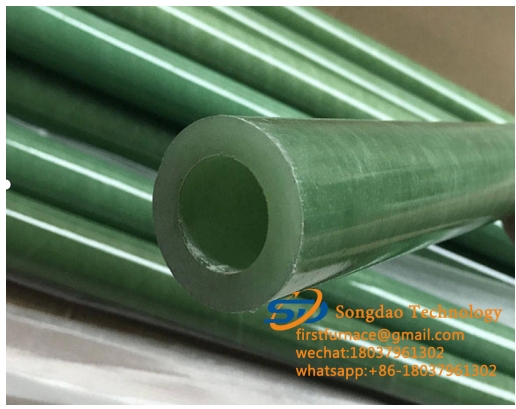- 10
- Mar
Różnica między rurą z włókna szklanego epoksydowego a rurą izolacyjną
Różnica między rurą z włókna szklanego epoksydowego a rurą izolacyjną
Rura z włókna szklanego epoksydowego to rura o okrągłym przekroju wykonana z elektrotechnicznej, wolnej od alkaliów tkaniny z włókna szklanego impregnowanej żywicą epoksydową, wypalana i prasowana na gorąco w formie formującej. Rura z włókna szklanego epoksydowego ma wysokie funkcje mechaniczne. Funkcja dielektryczna i dobra obrabialność. Stopień odporności na ciepło rury z włókna szklanego epoksydowego można podzielić na klasę B (130 stopni), klasę F (155 stopni), klasę H (180 stopni) i klasę C (powyżej 180 stopni). Rura z włókna szklanego epoksydowego nadaje się do izolowania elementów konstrukcyjnych w urządzeniach elektrycznych. Rura z włókna szklanego epoksydowego może być używana w wilgotnym środowisku i oleju transformatorowym.

The appearance of the epoxy glass fiber tube: the appearance should be smooth and smooth, free of air bubbles, oil and impurities, and it is allowed to have uneven color, scratches, and fine unevenness that will not hinder the use. The epoxy glass fiber tube diameter exceeds 25mm. Laminated glass cloth The pipe is allowed to have cracks on the end surface or section that do not hinder the use.
The insulating tube is made of electrician’s alkali-free glass fiber cloth impregnated with epoxy resin and processed by baking and hot pressing in a forming mold. The tube has a circular cross-section. The insulating tube has high mechanical functions, dielectric functions and good Machinability. Insulation pipe heat resistance grade can be divided into B grade (130 degrees) F grade (155 degrees) H grade (180 degrees) and C grade (above 180 degrees). The insulating tube is suitable for insulating structural parts in electrical equipment, and the insulating tube can be used in the humid environment and in transformer oil.
Appearance of the insulating tube: The appearance should be smooth and free of bubbles, oil and impurities, and there should be color unevenness, scratches, and slight unevenness that will not hinder the use. The laminated glass cloth tube with the diameter of the insulating tube exceeding 25mm is allowed to have the end surface or cross section. Cracks that do not hinder the use.
